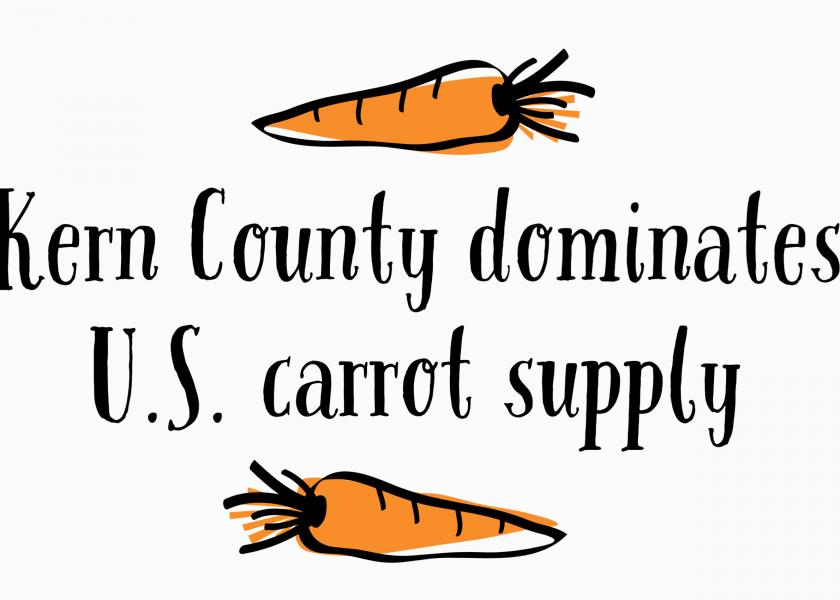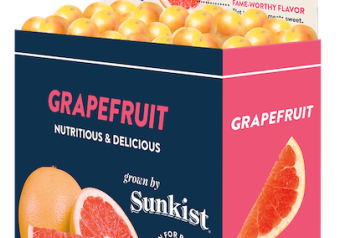Kern County dominates U.S. carrot supply

California’s Kern County produces eight out every 10 carrots grown in the U.S., according to a recent estimate by the University of California, Davis. County officials estimated the 2019 value of the fresh and processed carrot supply at $336.1 million. The 2017 Census of Agriculture put fresh carrot acreage in Kern County at 27,078 acres, compared with 3,250 acres for processed carrot acreage. The U.S. Department of Agriculture reported California carrot shipments of 748.7 million pounds in 2020, up from 723.6 million pounds in 2019.
In 2020, the United Fresh Produce Association’s FreshFacts on Retail report said that overall U.S. carrot were $1.41 billion, up 7.8% from 2019. Carrot volume sold at retail totaled 1.11 billion pounds, up 9.5% compared with 2019. The average price per pound of carrots at retail was $1.27 per pound, down 1.6% compared with 2019. Carrots performed well in 2020, but slightly below the overall vegetable category, according to FreshFacts on Retail. FreshFacts on Retail said total retail vegetable dollar sales in 2020 topped a new high of $35.8 billion (attributable to the pandemic), up 14.4% compared with 2019.
Consumer reach
Seventy-eight percent of consumers bought carrots in 2020, according to FreshFacts on retail.
The Packer’s Fresh Trends 2021 report said 56% of shoppers said they bought fresh carrots in the past year. Carrot consumption is skewed toward higher-income and older customers, according to Fresh Trends. Fresh Trends said 63% of consumers earning $100,000 or more per year said they bought fresh carrots in the past year, compared with 61% of those making $50,000 to $100,000, 50% for those making $25,000 to $50,000, and just 43% for those earning less than $25,000. Fresh Trends showed 59% of women said they bought fresh carrots in the past year, compared with 51% of men. By age, 68% of consumers 60+ said they purchased fresh carrots, compared with 70% for those 50-59, 55% for those 40-49, 43% for those 30-39 and 39% for those 18-29. By region, 64% of consumers in the Western U.S. said they purchased fresh carrots, compared with 56% in the Northeast, 52% in the Midwest and 51% in the South. By family size, 60% of consumers with no kids at home said they purchased fresh carrots, compared with 49% with kids.








